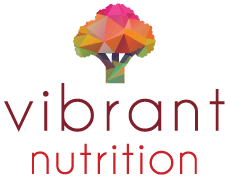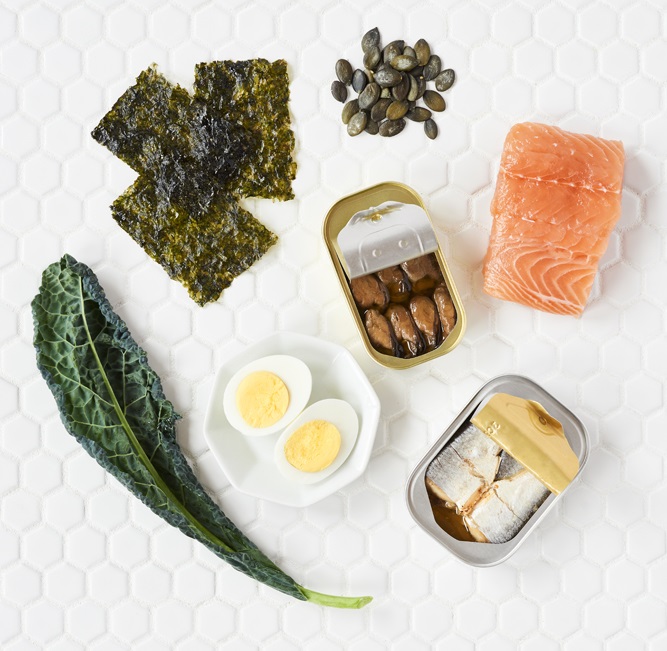February 2nd, 2018
Food Allergies: What to know before baby starts eating
Food allergies have been on the rise in recent years, giving everyone, especially new parents another reason to worry about food. Good news – while allergies are becoming more common, they are also becoming more manageable with the rise of more allergen-free foods and allergy-friendly resources for support. Our guest writer for this article, Kathleen O’Hagan, has created one of these resources in the form of a website called AllergyBites. It informs parents about products and services to help them manage their family’s food allergies. Read her story on preparing for the possibility of food allergies below, and don’t forget to check out our article on allergies and nutrition too!
Before Starting Solids: What You Need to know about Food Allergies
Kathleen O’Hagan
As the mom of a toddler with multiple food allergies, this is something I think about a lot: How can I prepare new parents for the possibility of an allergic reaction… without being viewed as fear-mongering or paranoid? Because I know firsthand that this topic doesn’t get the attention it deserves at a regular check-up. Sure, your doctor will talk with you about whether or not your baby is ready to start eating solids, and how to do it safely. And yes, food allergies will get a brief mention. But in my opinion, that mention should be anything but brief. In a perfect world, parents would be sent home with a brochure that talks us through the different symptoms of a reaction and a step-by-step plan in case of emergency.
Please know I’m writing this—not to scare you—but to simply prepare you for the very small chance that your baby ends up having an allergic reaction to a new food while you are introducing solids.
FOCUS ON FACTS, NOT FEAR
Let me start by saying that only 1 in 13 children in North America have food allergies. That’s only 7.7% of the population. Children who are at increased risk of developing a food allergy generally already have a parent or sibling with an allergic condition. The likelihood is that your child won’t react to their first lick of peanut butter.
But still, it doesn’t hurt to be able to recognize the signs and symptoms just in case. A peanut (or milk… or fish… or soy) allergy is very different than a seasonal allergy. We’re not talking watery eyes and sneezing—although symptoms can include these as well as hives, swelling, redness and rash. In serious cases, there’s a risk of multiplying hives, possible vomiting, and even difficulty breathing. Yup, food allergies are a whole other ballgame.
With food allergies on the rise, we all need to be aware of the seriousness (and the symptoms!) whether we are food allergy parents or not. Because there might come a time when this knowledge will help us spread awareness, encourage compassion, or possibly save the life of another child living with food allergies.
HERE’S MY STORY…
The truth is, before introducing solids to my little guy, I knew nothing about the seriousness of food allergies. My biggest worry was having a picky eater—not an anaphylactic reaction.
So when our family doctor told us it was time to introduce our baby to one of the top allergens by giving him a lick of peanut butter, I didn’t think of asking her what to do if he did react. Neither I or my husband has a food allergy, and I was getting ready to raise an adventurous little foodie. And if our doctor didn’t seem all that concerned, why should we be?
Unfortunately, it turns out, we should have been. Immediately after trying the peanut butter, our baby boy broke out in hives and a rash around his mouth. Still, we weren’t too worried. We gave him a pop of Benadryl and considered giving him some more peanut butter the next day… you know, to build his immunity.
Luckily, I checked in with an online moms group—and the response was unanimously “NO! Make an appointment to see your doctor ASAP. And do not expose your child to peanut butter again.”
While this situation is fairly uncommon, it doesn’t hurt to be prepared. Feeding shouldn’t be a high-stress activity, and unless medically advised, you shouldn’t delay feeding your child potential allergens as they can be sources of some very important nutrients! Not to mention, the most recent recommendations are to introduce allergens as early as possible.
KNOWLEDGE IS POWER
While I wasn’t as prepared as I should have been, I’m here to better prepare you for this moment. Keep in mind, I am not a healthcare professional. I’m just an allergy mom doing what I can to raise awareness. So without further ado, here are a few tips for parents introducing solids to their little ones…
Before feeding:
- Familiarize yourself with the symptoms of an allergic reaction (both mild and severe).
- Feed the allergen in the morning so that you can monitor your babe for symptoms throughout the day. Then wait a few days between adding new foods to your baby’s diet.
- If you’re feeling nervous, wait until another adult is present before introducing an allergen. Two heads are better than one when it comes to high-stress situations!
- If you or a family member already has food allergies, talk to your doctor about your concerns. They may recommend that you keep an EpiPen nearby.
Note: Keep in mind that there can be a connection between eczema, asthma and food allergies. If your little one has eczema or asthma, be extra watchful when introducing top allergens. If your child experiences a mild reaction:
- Try to avoid giving Benadryl as one of its side effects is sleepiness — which can also be a symptom of anaphylaxis.
- Monitor your child for the next several hours, and call 9-1-1 if things start to get serious.
- Avoid re-exposure. Get the allergen out of your home and avoid situations where it might be present, whether that be a favourite restaurant or a social outing that centres around food.
- Make an appointment with your family doctor or pediatrician to get a referral to the allergist.
- Depending on your comfort level, you may want to avoid introducing other top allergens until speaking with your allergist.
Note: A mild reaction the first time does not mean the next time won’t be anaphylactic. Always be vigilant when it comes to your child’s allergen(s). If symptoms are severe:
- Call 9-1-1 immediately. If you have already been prescribed an EpiPen, and have been trained on how to use it, then do so.
- Once your child has been treated and you’re back home again, monitor them for the next 24 hours to make sure they don’t experience a relapse after the medications wear off.
- Make an appointment with your family doctor or pediatrician to get a referral to the allergist.
- If you have to wait several weeks (or months!) for your allergist appointment, talk to your doctor about getting an EpiPen in case your child is re-exposed.
- With the help of your allergist, come up with an emergency plan that makes you feel comfortable.
Note: Watching your child experience an anaphylactic reaction can be traumatic for parents. Consider speaking with a food allergy therapist or joining an online support group.
If your child does end up having a reaction, fear not, you are more than capable of handling this and having a happy, healthy child. Some children even outgrow their allergies in a few years. In the meantime, check out helpful resources such as AllergyBites, and read this article on handling the nutritional aspects of food allergies.
Special Offer: Grab yourself an AllergyBites discount card & enjoy exclusive discounts on allergy-friendly brands. Use promo code VIBRANT to get $5 off the purchase of your card. Offer expires: March 2nd 2018
Kathleen is a Toronto-based writer & food allergy mom. Her professional writing experience includes 10+ years of content creation in the form of blogs, newsletters, social media, and even video. As the mom of a toddler with multiple food allergies, she’s learned how time-consuming it can be to find safe products and accommodating spaces for her little guy. That’s why she founded AllergyBites, with the mission to make it THE go-to spot for allergy-friendly eats, treats, places & spaces.

